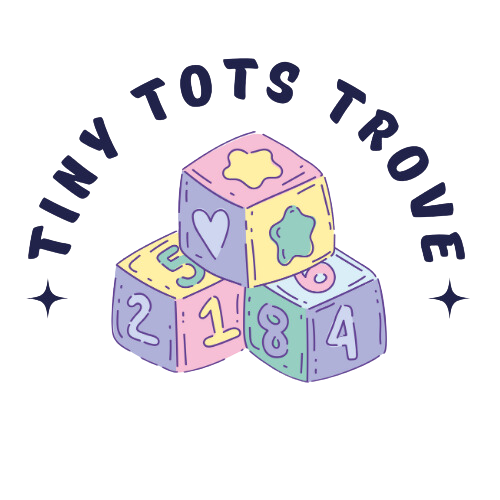
Have you ever watched a toddler serve tea to stuffed animals or pretend to be a superhero? What might look like simple fun is the foundation of critical cognitive, social, and emotional development. Pretend play, also known as imaginative or symbolic play, is a crucial aspect of early childhood development. This type of play involves children using objects, actions, or ideas to represent other objects, actions, or ideas, allowing them to explore and make sense of the world around them. Pretend play is not just fun; it is a powerful tool for developing cognitive, social, and emotional skills. In this article, we will explore the developmental stages of pretend play from birth to six years old, identify key red flags that may indicate a child is struggling with these skills, and offer practical tips on how parents and educators can nurture pretend play.
Developmental Milestones of Pretend Play (0-6 Years)
0-2 Years: The Foundations of Pretend Play
In the first two years of life, children begin engaging in early forms of pretend play:
- Emerging Symbolic Thought: Babies start using objects symbolically, like pretending to drink from an empty cup or talking on a toy phone. These early gestures mark the beginning of understanding that one object can represent another.
- Imitation of Adult Behaviours: As toddlers approach their second year, they imitate adult actions, such as feeding a doll or driving a toy car. This imitation is a key component of developing cognitive flexibility, an essential building block for advanced pretend play.
2-3 Years: Expanding Imagination
As children grow, their pretend play becomes more elaborate:
- Role Play: Toddlers begin to take on roles such as a parent, doctor, or teacher, imitating daily routines they observe. They might pretend to cook or care for a baby, showing their growing understanding of the world.
- Parallel Play: While still engaging in parallel play—playing alongside others without direct interaction—children begin to observe and mimic each other, developing social understanding.
3-5 Years: Complex Role Play and Social Interaction
Between the ages of three and five, pretend play becomes more sophisticated:
- Cooperative Role Play: Children begin to play with others in more coordinated ways, assuming specific roles and contributing to shared scenarios. Games like ‘house’ or ‘superheroes’ become popular, with each child playing a part in the evolving storyline.
- Narrative Development: Children create more complex storylines during play, reflecting their expanding vocabulary and cognitive abilities.
5-6 Years: Advanced Social Play and Problem-Solving
By five to six years old, pretend play involves intricate plots and multiple roles:
- Structured Scenarios: Children engage in group play with well-defined roles and rules, such as playing a game of ‘store’ with assigned roles like cashier or shopper.
- Problem-Solving and Negotiation: They learn to navigate social dynamics, solve conflicts within play scenarios, and negotiate roles, which is essential for advanced social and cognitive skills.
Red Flags: When Pretend Play Skills Are Struggling
While pretend play is a natural part of childhood, some children may experience difficulties. However, it is important to remember that variations in development are normal, and not every deviation is cause for concern.:
- Lack of Interest in Pretend Play
If a child shows little interest in pretend play by age three, this could be concerning. A lack of pretend play might indicate difficulties in symbolic thinking, creativity, or social engagement. If your child prefers solitary or repetitive activities, it may impact their cognitive and social development. (Barton & Wolery, 2010).
- Limited or Rigid Play Themes
Children who stick to a narrow range of play themes or repeat the same scenario without variation may have challenges with creative thinking or cognitive flexibility. This rigidity can be a sign of developmental issues, such as autism spectrum disorder (ASD), where imaginative play is often less varied (Wolfberg, 2009).
- Difficulty Engaging in Cooperative Play
By four or five, children should engage in cooperative pretend play with peers, taking on roles and contributing to a shared narrative. If a child struggles with group play or understanding the rules of pretend scenarios, it may indicate social or emotional difficulties, impacting their ability to build relationships (Lillard et al., 2013).
Tips for Encouraging Pretend Play Skills
Parents and educators can foster pretend play skills with these practical tips:
- Follow the Child’s Lead
Observe your child’s play and let them guide the direction. If they are arranging toy animals, for instance, you might say, ‘You’re lining up the zebra and giraffe.’ By allowing the child to steer the play, you foster their autonomy, build confidence, and encourage creativity.
- Create a Rich Play Environment
Set up play spaces that invite exploration and role play. For example, a corner of the room could be transformed into a mini kitchen, a doctor's office, or a store. Rotate toys and props to keep the play environment fresh and engaging, which helps sustain children's interest in pretend play.
- Engage in Pretend Play Together
Engage in pretend play by assuming a role or following your child’s lead in the scenario. Ask open-ended questions like, ‘What happens next?’ or ‘How can we fix this?’ to encourage deeper thinking and problem-solving. You can also extend your child’s play by offering suggestions, such as building a zoo together or introducing a challenge, like animals needing help. However, be mindful not to overwhelm the child with too many questions or excessive guidance.
Conclusion
Pretend play is more than just fun—it is essential for fostering creativity, cognitive development, and social-emotional skills in early childhood. Understanding the developmental milestones of pretend play can help parents and educators provide appropriate support. Recognising when a child struggles with pretend play and intervening early can make a significant difference in their development.
If you’re looking for tailored advice or want to know more about supporting your child’s development, don’t hesitate to reach out to us at Little Marvels Therapy. We’re here to help foster your child’s growth through fun, creative play!.
References
Barton, E. E., & Wolery, M. (2010). Teaching pretend play to children with disabilities: A review of the literature. Topics in Early Childhood Special Education, 29(2), 109-123. https://doi.org/10.1177/0271121408320909
Lillard, A. S., Lerner, M. D., Hopkins, E. J., Dore, R. A., Smith, E. D., & Palmquist, C. M. (2013). The impact of pretend play on children’s development: A review of the evidence. Psychological Bulletin, 139(1), 1-34. https://doi.org/10.1037/a0029321
Wolfberg, P. (2009). Play and imagination in children with autism. Teachers College Press.
By Qi Ting Vong and Jewel Yi
Qi Ting and Jewel are Occupational therapists at Little Marvels Therapy specializing in family-centered, evidence-based approaches to early childhood development..For any concerns regarding your child’s social skills, play skills, sensory processing and motor development please visit www.littlemarvelstherapy.com or contact 8189-1636



